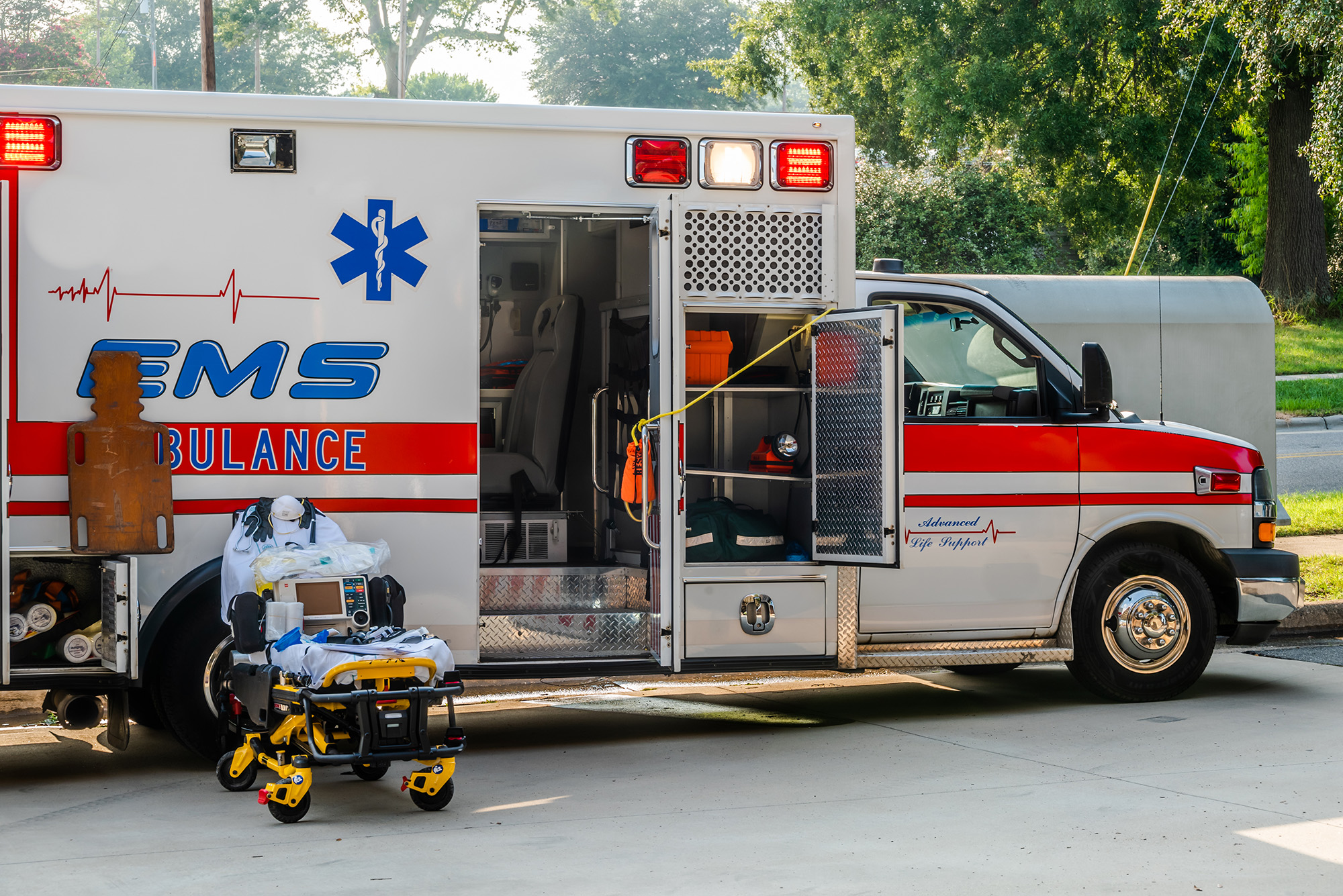Climate control may not be the first thing that comes to mind when you think of military vehicles,...
Emergency Vehicles and HVAC-R: When Seconds Count, So Does the Climate Control


Whether racing to a scene, stabilizing a patient, or managing a crisis from the back of a mobile command unit, climate control in emergency vehicles goes beyond comfort. Heating and cooling inside patient areas, crew cabs, and mobile work zones can mean the difference between saving a life and losing precious time. That’s why MCC builds the industry’s most dependable HVAC-R systems that respond with the same urgency as the people we serve.
So what makes HVAC-R design different in emergency vehicles? These aren’t typical work trucks. Each type has its own job to do, but they all push heating and cooling systems to their limits in ways that most vehicles never will.
What Emergency Vehicles Need From HVAC-R
Emergency vehicles serve very different functions, but they all require highly specialized HVAC-R systems. Here's how:
- Multi-zone climate control: Ambulances need separate systems for the driver cab and patient bay. Fire trucks often serve crews of 2 to 10 in multiple compartments. Police mobile units combine workstations with front-seat operation and equipment storage.
- Electric standby cooling: Ambulances often idle outside hospitals and need to run A/C without an engine. Fire trucks sit on scene while crews rotate through recovery inside. Police units may park for long periods in urban zones where idling isn’t allowed.
- Sensitive electronics and supplies: Ambulances carry temperature-sensitive medications. Fire trucks include radios and tech compartments that need heat protection. Police units serve as command centers with onboard IT and comms.
- Humidity control: This is a huge challenge for fire trucks, where wet gear, heat and physical exertion create foggy, uncomfortable conditions.
- Quiet operation: Especially important in ambulances where patient care is happening, and in command vehicles where clear communication is critical.
Ambulances: Always on Standby
Whether rushing to the scene or providing on-site care, ambulances do more than move patients from point A to point B. They're mobile clinics, a lifeline for those in crisis, and a climate-controlled zone where seconds matter.
That level of care depends on reliable heating and cooling for the people onboard and for everything else inside. From temperature-sensitive medications to life-saving equipment, the environment inside an ambulance on duty must stay tightly controlled, no matter where it is or how long it’s been parked.
Up front, the driver’s cab A/C works like a typical truck and stays independently controlled. Meanwhile, the patient bay in the back needs to be climate controlled at all times to protect both patients and temperature-sensitive medical supplies. But when idling isn’t an option, like outside hospitals in no-idle zones, MCC’s battery-powered systems deliver steady airflow and reliable temperature control, even when the engine is off.
MCC systems also use advanced filtration to bring in outside air while removing airborne pathogens and contaminants. That extra layer of protection helps ensure the air inside stays clean and safe for patients and first responders alike.
Fire Trucks: Where Heroes Cool Off, and So Much More
Where do firefighters go to rest, rehydrate, and recover during or after a call? Usually, it’s back to the truck. A fire truck may be built to carry water and equipment and get crews to the scene fast, but it also doubles as a mobile recovery zone where firefighters can regroup, and sometimes, it’s the only shelter available during long shifts fighting flames.
That puts serious pressure on the climate system inside. When firefighters return sweating, soaked, and physically drained, the cab can quickly become a hot, humid space packed with wet gear and rising condensation.
That’s why fire trucks need HVAC systems with strong humidity control. Condensation from soaked gear and recirculated air can fog up windows and block visibility. In some cases, condensation can even leak out during high-speed driving and compromise electronics or equipment.
Just like ambulances, fire trucks have multiple zones that can be heated, cooled, and dehumidified independently of one another. Driver areas, crew compartments, and sometimes extra cabs for special equipment need targeted climate control with dependable performance, and not every HVAC system is designed for that.
When it comes to layout, fire trucks bring their own set of challenges. Notch roofs, tiller cabs, rooftop ladders, emergency lighting, and gear mounts all compete for space. That’s why MCC designs compact HVAC-R systems that are specially designed to fit within a fire truck’s limited space while keeping airflow consistent where it matters most.
Long Hours and High Stakes for Police and Command Units
As the nerve centers for high-stakes operations, police vans and mobile command units are outfitted with sensitive electronics to function as mobile offices, communication hubs, and on-site command posts. Because they often stay in place for hours, keeping a climate controlled environment is essential to the safety and performance of everyone inside.
Unlike patrol cars that are frequently on the move, these units often stay parked at active scenes or during surveillance operations. That puts extra pressure on the climate system. Radios, laptops, servers, and comms gear require steady temperatures to function reliably, and officers need to stay focused and comfortable, rain or shine.
Reducing engine idling is a major concern, and MCC systems are designed to solve for that across the board:
- Idle-reduction compliance: In many urban areas and near hospitals, idling is restricted or prohibited. MCC’s battery-powered systems allow for full HVAC operation without the engine running.
- Battery efficiency: In hybrid and electric vehicles, inefficient climate control can shorten operating time. MCC’s high-efficiency systems use less power, helping crews get the most from each charge.
- Surveillance: Stealth matters, especially when surveilling in real time or staying incognito. MCC systems are built for low acoustic impact, giving crews maximum climate control while keeping under cover.
MCC’s climate control solutions are built to support every function of today’s police and command units, without compromising comfort or the mission.
Ready to Keep Cool Under Pressure?
For emergency vehicles that can’t afford downtime, MCC delivers climate control systems engineered to perform under real-world conditions. Whether it’s an ambulance rushing to the ER, a fire truck returning from the front lines, or a command unit managing a high-stakes operation, our solutions are built for the unique and trying demands of the job.
Contact us to discover why leading OEMs trust us to help them spec better-performing vehicles—and to keep crews comfortable and ready for anything.
June 30, 2025



